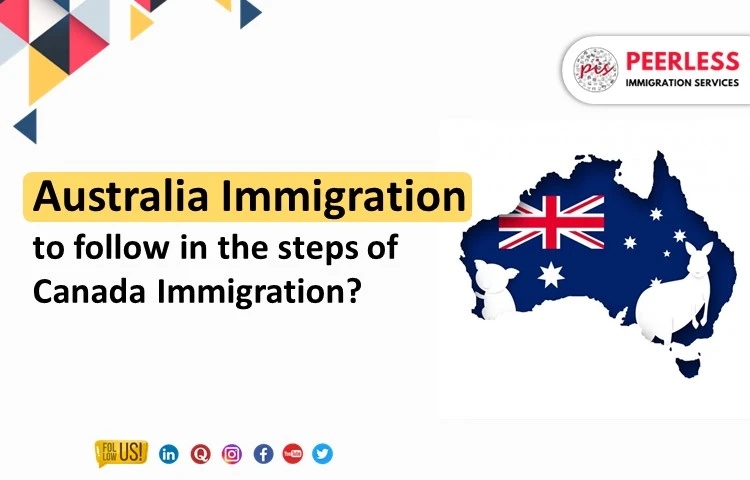
Australia Immigration to follow in the steps of Canada Immigration?
Australia to start with the Point based Immigration system
In order to quickly draw in skilled workers and give them a path to permanent residency, Australia recently proposed to overhaul its immigration system. The intention is to increase the trend of skilled people choosing to move to Canada or other nations rather than Australia. The Australian government wants to put new immigration laws into place that will tempt skilled immigrants to contribute to the local labor market, acknowledging the competitiveness of the global talent market. In order to support the project, the government has chosen to reinstate its point-based immigration system.
Australia also has a points-based migration system, it is competitive, the processing time is lengthy, the application is expensive, and it is relatively weak in attracting younger and more highly educated migrants – in comparison to Canada.
Canada’s points test is innovative, focused on simplified eligibility criteria, hospitable work privileges, accelerated processing, and seamless application procedures. Since its constitution mandates that the federal and provincial governments share responsibility for migration, it is not state-based.
How, will Australia change its point-based immigration system?
The Government has suggested that, as part of the reform of Australia’s immigration system, state and territory expertise be used, supported by better data gathering and sharing amongst governments. This place-based approach should make it possible to move away from the state and territory-segregated and complicated visa settings that are currently present across the points-based programs.
What additional adjustments to the Australian immigration law are likely?
Over the next three to six months, Australia’s immigration system is anticipated to undergo significant changes as a result of the remarks made by Minister of Home Affairs Clare O’Neil at the National Press Conference and the Federal Budget. A few of these changes include:
- Creating more routes to permanent residency for holders of Student Visas and Employer Sponsored Visas;
- A three-tiered skilled visa program would simplify and streamline the application process (highly skilled, mainstream, and essential workers.
- Stricter regulations for student visas to guarantee that students are actually pursuing their studies and meet Australia’s skill requirements.
On July 1, 2023, the following modifications are anticipated to take effect:
- Increase in the Temporary Skilled Migration Income Threshold from A$53,900 to A$70,000
- Those with international student visas are permitted up to 48 hours of employment every two weeks;
- Until December 31, 2023, those working in the aged care industry will not be subject to this restriction; and
- New Zealand citizens will be able to apply for citizenship directly.
- Subclass 485 specific Holders of temporary graduate visas will be able to extend their visas for an additional two years.
- The department’s visa application fees will increase by 6% in addition to the regular CPI increase, but by 15% for some visitor and temporary visa subclasses and 40% for business innovation and investment visas.
- In order to preserve the integrity of the migration system, additional enforcement and compliance measures will be deployed.















